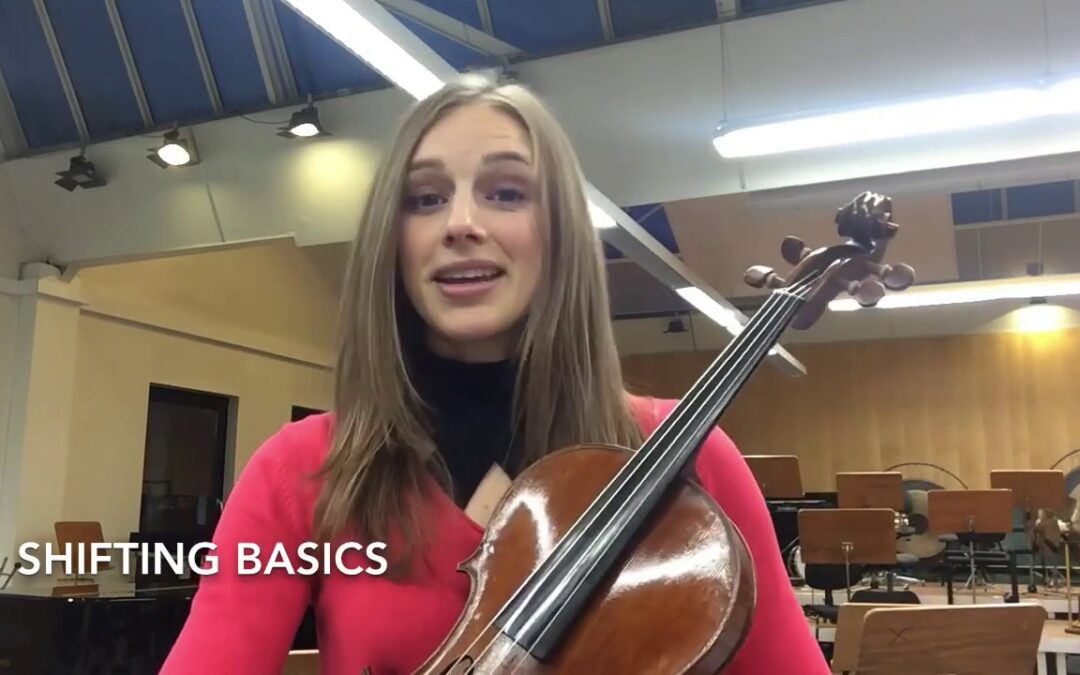Hey guys it's violamad with another
viola tips video. Today I wanted to talk about shifting. Shifting is something
that I've been working on for a long time, time, I will always be working on, but I
have a few tips that I wanted to share with you. So let's start with the basics:
shifting is moving the hand from one position to another. Say we go from the
first finger first position to first finger in third position. We start the
shift by lifting the weight from the finger but not lifting the finger off
the string. Slide the whole hand into the new position while the finger slightly
drags along the unpressed string.
When in the new position we put the finger down
and play the new note. If you drag your finger and the bow during that time you
can hear a sound like this This was explained to me to be called
the golf ball shift. The new note lands like a golf ball direct and on the beat. In the first example we didn't change fingers. If we were to change fingers say
going from a first finger, first position to a second finger, third position, we
still shift on the old finger.
Then when the old finger reaches the new position, so when I get to third position with the first finger, then I put my second finger
down so that sounds like this When we are doing this golf ball shift
or old finger shift if there is a bow change involved then the shift happens
on the old bow. So we shift before we change the bow. That sounds like this You may notice also varying the speed of
the bow will allow me to hide the shift. However we may not always want to hide
that shift. Shifting can be used as a great expressive tool. The expressive
shifts I like to think of as airplane shifts. That means that instead of
landing like the golf ball (dropping the finger down with pressure when we get to
the new position) we let the finger add pressure gradually as we are coming into
the new position. So here is an example of the airplane expressive shift.
I´m still lifting the weight off the finger when I start the shift but I'm adding
the weight before I get into the new position so that we hear a little bit of
that slide. Now if we are changing fingers during the shift then we will be
shifting on the new finger. So last time we were shifting on the old finger from
one to one then putting the two down. This time instead of shifting on the old
finger we shift on the new finger so that sounds a little bit like this in
slow motion Finally if there is a bow changed
involved instead of shifting on the old bow we now save the shift for the new bow. So back-to-back here would be an example
of the differences between the golf ball shift and the airplane shift For a great way to practice all the
varieties of shift with all possible finger combinations I would recommend
using the Yost system for shifting, which is available on imslp.
That's all for now from Violamad´s Viola Tips. Happy practicing.
